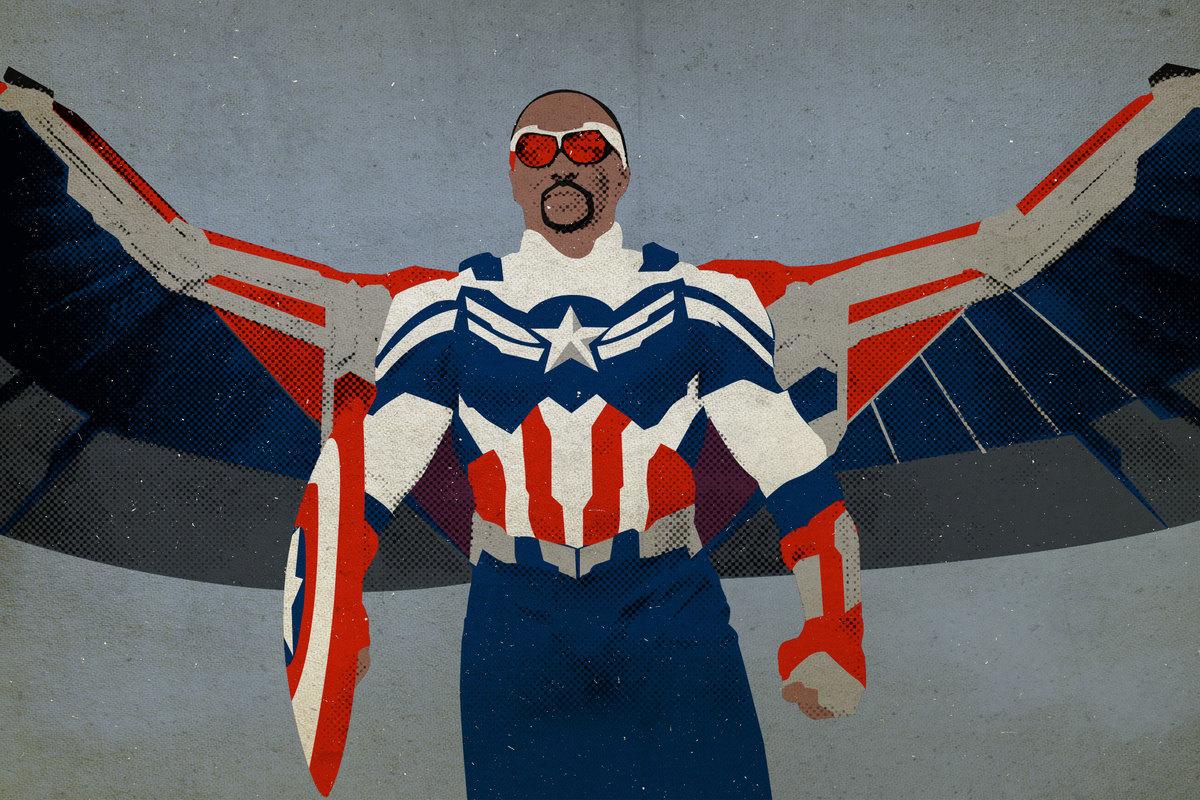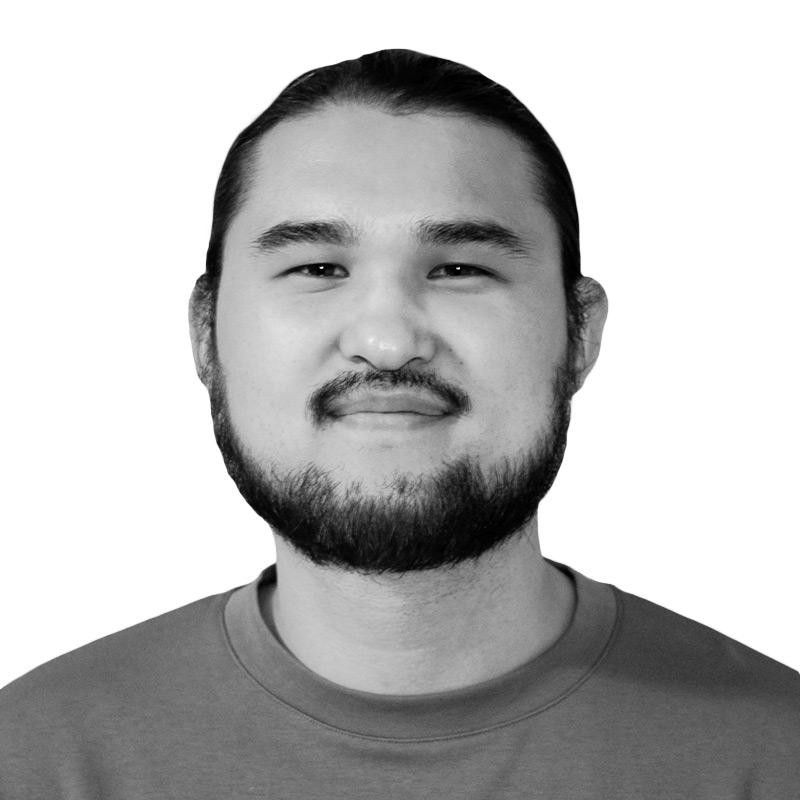The New Captain America Will Be Fighting for Something Different
At the end of ‘The Falcon and the Winter Soldier,’ Sam Wilson finally claimed the shield that Steve Rogers left for him. But that doesn’t mean that he’ll forget the inner conflict he faced before deciding to take up the mantle.

The first time we meet Sam Wilson in the opening moments of 2014’s Captain America: The Winter Soldier, the former U.S. Air Force pararescueman is going for a morning run around the National Mall in Washington, D.C. Before long, Sam’s peaceful jog is disrupted by another runner: Steve Rogers speeds past Sam, and then proceeds to lap him over and over again. The scene is a display of Steve’s absurd super-soldier athleticism, with Sam’s human limitations providing a reference point to prop him up. But it also marks the start of an important partnership, as the two would soon go on to fight beside each other against a corrupt government, super friends, and finally, an alien invasion led by the most fearsome purple-skinned villain the galaxy had ever seen.
The world has drastically changed since the pair first met on that run in the capital. Steve is gone—whether he’s dead or just vibing out on the moon, as so many people seem to believe—and so are the Avengers. And following the conclusion of The Falcon and the Winter Soldier, the mantle of Captain America belongs to Sam Wilson, superpowers or not.
Sam’s journey to wielding Captain America’s iconic shield is at the heart of The Falcon and the Winter Soldier, which finished its six-episode first season last Friday. But the series began with the shield already in his possession—Sam just didn’t want it yet. More important than the hunk of vibranium itself was the legacy that came with it, which proved to be increasingly complicated as Falcon progressed. In the premiere, Sam decides to memorialize the shield with the man who made it famous, and donates it to the Captain America exhibit at the Smithsonian. “Symbols are nothing without the women and men that give them meaning,” he tells the crowd at the commemorative event. “This thing … I don’t know if there’s ever been a greater symbol. But it’s more about the man that propped it up—and he’s gone.”
After the government almost immediately hands the shield to John Walker, Sam begins to see the ugly sides of the symbol that weren’t as pronounced when it belonged to his friend. The legacies of the shield, the super-soldier serum, and the United States are all connected to each other, for better or for worse. Walker quickly comes to represent America as a bully rather than a protector (which is, you know, deeply and darkly accurate, historically speaking). Meanwhile, with the shield and the new Cap as its reinforcements, the Global Repatriation Council represents the American government’s penchant to sacrifice lives for the sake of maintaining a status quo that benefits only a select few. And meeting Isaiah Bradley reminds Sam of the country’s racism, both past and present. For so long, Sam fought for his country, whether as a member of the U.S. Air Force or as an Avenger. He’s only recently started to question whether his country was fighting for him.
Sam’s arc culminates in Falcon’s fifth episode, “Truth,” when he and Bucky reclaim the shield from Walker and Sam finally sits down face-to-face with Isaiah Bradley and hears his story in its entirety. Bradley recounts the injustice he faced at the hands of his own government, when he was rewarded for heroically saving his captured brothers-in-arms from imminent deaths with 30 years in prison and forced, inhumane experimentation—a vastly different reward than Steve Rogers triumphantly received for doing the exact same thing during World War II. Bradley also shares his two cents on the mantle itself with Sam: “They will never let a Black man be Captain America. And even if they did, no self-respecting Black man would ever wanna be.”
When Sam returns to Louisiana shortly after, he tells his sister about Isaiah, but says he needs to parse through his story and “figure out what it all means.” After taking the time to do some thinking, fix up his parents’ boat with Bucky, and get really good at throwing the shield, Sam ultimately decides to continue the fight so that the sacrifices of those like Bradley don’t go in vain.
Falcon’s writing team fails to truly justify why Sam would choose to do so while still wearing the stars and stripes, rather than build a new legacy around a different symbol that doesn’t have so much pain and injustice tied to it. Nonetheless, Sam rolls into the finale wearing a patriotic wingsuit gifted to him by the Wakandans, and shows New York City—along with the rest of the world watching from afar—the new Captain America in action. Instead of being denied his now self-appointed position, he’s met by so many cheers at every turn in New York you’d think the Knicks’ nine-game winning streak never ended. Sam even gets the blessing of Bradley, who had watched Sam’s televised speech condemning the GRC’s Patch Act and calling for the senators on the committee to do better. When Sam visits Isaiah in Baltimore following his confrontation with Karli Morgenthau and the Flag-Smashers, he offers up Falcon’s best explanation for his decision to take up the mantle. “I might fail. Shit, I might die,” Sam tells Isaiah. “But we built this country. Bled for it. I’m not going to let anybody tell me I can’t fight for it. Not after what everybody before me went through, including you.”
Even without any super-soldier serum coursing through his veins, or the blond hair or blue eyes that used to be part of the job description, Sam has become the country’s next great champion—regardless of what any racist critic would think. As Sam says in that same speech to the GRC: “The only power I have is that I believe we can do better.”
While it remains unclear whether The Falcon and the Winter Soldier will return for a second run—potentially rebranded as Captain America and the Winter Soldier, as the title switch in the credits of the finale suggests—The Hollywood Reporter reported on Friday that Captain America 4 is already in the works. Spellman will return to pen the script, along with Falcon staff writer Dalan Musson, but little more is known about the upcoming film so far; no castings for the project have been officially announced, nor is any director currently attached at the helm. There’s always the slim chance that Chris Evans could find his way back from the moon to reprise his role as the original Captain America, but after Sam spent nearly six hours of screen time just to get the shield back in Falcon, it seems all but certain that Anthony Mackie will return to star in his first film since putting on his fancy new wingsuit.
As far as the threats that the new Captain America may face, Julia Louis-Dreyfus could always sneak her way into the film as a potential villain, as her Contessa Valentina Allegra de Fontaine is expected to play a larger role in the MCU. While her future remains a mystery, Valentina could take on the title of Madame Hydra, as she does in the comics, and attempt to rebuild Hydra’s evil empire after it fell in Captain America: The Winter Soldier. The rebirth of Hydra, the Nazi-like authoritarian paramilitary organization that Steve Rogers fought across several decades, would mirror Sam’s story with his predecessor’s, as the MCU could modernize Hydra to fit this post-Blip world. Similarly, Sharon Carter could return as the Power Broker, as the finale’s post-credits scene showed her lining up potential buyers for her newly acquired access to government property and secrets after she was reinstated to the CIA. If the government has a villain on the inside, Sam may be the only one capable of weeding her out, just as Steve did in Winter Soldier.
In the end, The Falcon and the Winter Soldier concluded in a similar fashion to WandaVision, as both shows ended with their starring characters taking on new, powerful monikers and senses of purpose after each confronted their past. Wanda dealt with a lifetime of grief and became the Scarlet Witch (meaning she still might mess around and destroy the world, in case you’ve forgotten), and Sam grappled with a complicated legacy that stretched back generations before him to become the next Captain America, prepared to take on whatever the world deals him next.
During Sam’s speech at the Smithsonian in the premiere, he said that “we need new heroes, ones suited for the times we’re in.” In that moment, he was explaining his decision to retire the shield, but the line also foreshadowed what would come to pass over the course of the rest of the series. In a world only months removed from half its population suddenly reappearing from the dust, Falcon called for a hero who was more level-headed than the supposedly perfect soldier John Walker, and one who could empathize with the villainous Flag-Smashers and the value in their misguided fight for justice when no one else could. Someone who can fight for the good guys, while also understanding that the good guys have plenty of progress to make themselves. As the MCU moves further into whatever weird new threat is in store in Phase 4, with alternate timelines and universes, shape-shifting Skrulls, and more witchcraft on the way, the new-look Captain America will have to lead the charge toward a better world.

